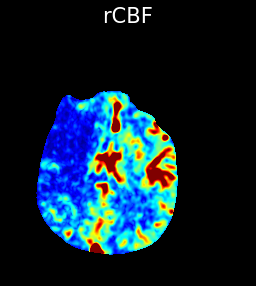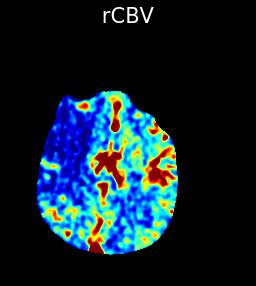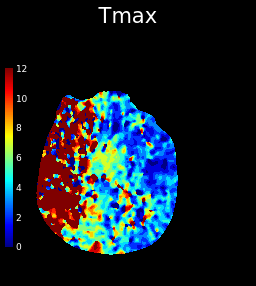Stroke, a leading cause of disability and mortality worldwide, is a complex medical condition where rapid and accurate diagnosis is crucial for effective management. CT perfusion is an invaluable tool in this setting, offering precise quantification of cerebral blood flow disruptions and helping differentiate between the ischemic penumbra and the infarct core. This post explores CT perfusion's critical role in acute stroke management, emphasizing the interpretation of cerebral blood flow (CBF), cerebral blood volume (CBV), mean transit time (MTT), and time to peak (TTP) values in differentiating reversible from irreversible cerebral ischemia.
CT Perfusion Technique: A Primer
CT perfusion involves the injection of iodinated contrast material and rapid serial imaging to assess the dynamics of cerebral blood flow. Accurate positioning and timing of the scan are crucial to ensure the reliability of the data. Key steps include:
Patient Positioning: Patients are placed supine with the head secured in a chin tuck position to minimize radiation to the eyes and ensure stability throughout the scanning process.
Contrast Administration: A rapid injection of contrast, typically at a rate of 6-8 mL/s, followed by a saline flush, is critical for optimal visualization of blood flow dynamics.
Scanning Protocol: The scan covers essential brain regions, typically focusing on the basal ganglia (anterior circulation), with a shuttle scan range of about 10 cm, adjusting as necessary based on the suspected location of ischemia.
Key Parameters Assessed in CT Perfusion
The primary parameters measured include:
Cerebral Blood Flow (CBF): Indicates the volume of blood flowing through a given mass of brain tissue per minute. Typically ranges from 50 to 60 milliliters per 100 grams of brain tissue per minute in the gray matter.
Cerebral Blood Volume (CBV): Represents the total amount of blood within the brain tissue. Generally around 4 to 5 milliliters per 100 grams of gray matter brain tissue.
Mean Transit Time (MTT): Reflects the average time it takes for blood to traverse the brain's vasculature. Usually falls between 4 to 6 seconds in the gray matter.
Time to Peak (TTP): The duration until the contrast agent reaches its peak concentration in the brain following its injection. Typically observed between 15 to 25 seconds, depending on the specific circulation dynamics and injection protocol.
Step-by-Step Interpretation Process
Initial Assessment:
Obtaining Values: The first step involves obtaining MTT, CBV, and CBF values from multiple regions of interest across both the affected and normal hemispheres. This comprehensive collection of data ensures a baseline is set for comparison.
MTT Evaluation: MTT is assessed next. A prolonged MTT compared to the normal hemisphere indicates that ischemia or infarction is present, suggesting a disruption in normal blood flow patterns.
Differentiating Tissue States:
Comparing CBF and CBV: To distinguish between ischemic and infarcted tissues, the values of CBF and CBV are critically compared:
Reversible Ischemia: If CBF is reduced but CBV is normal or slightly reduced, it suggests that the tissue ischemia might still be reversible. This indicates that while blood flow is compromised, enough blood volume remains to potentially salvage the tissue.
Irreversible Infarction: Markedly reduced CBF and CBV or non-measurable TTP point towards irreversible infarction. This suggests severe ischemia with substantial reduction in blood volume and flow, likely leading to tissue death.
The above images depict a case of right MCA infarction, showing a prolonged MTT and markedly reduced CBF and CBV compared to the left side indicating a lack of significant blood flow reaching the tissue in the mCA distribution .
Practical Implications for Stroke Management
Clinical Decision-Making: These measurements are instrumental in guiding acute stroke management. Identifying areas of reversible ischemia enables timely interventions, such as thrombolytic therapy, which can restore blood flow and prevent permanent damage.
Prognostication: Knowing the extent of potentially salvageable brain tissue versus infarcted tissue helps in prognostication and planning appropriate post-stroke care and rehabilitation.
Conclusion
Through the nuanced interpretation of MTT, CBF, and CBV, CT perfusion imaging becomes a powerful tool in the differential diagnosis of ischemic stroke, allowing clinicians to make informed decisions about urgent interventions. This advanced capability not only helps in optimizing treatment strategies but also significantly impacts patient outcomes by facilitating targeted therapies based on specific perfusion patterns within the brain.











<a href="https://soul-cybin.net/product/the-five-masters-natures-gift/" rel="dofollow">The Five Masters – “Nature’s Gift”</a>
<a href="https://soul-cybin.net/product/ceremonial-chocolate-soul-retrieval/" rel="dofollow">Ceremonial Chocolate – “Soul Retrieval”</a>
<a href="https://soul-cybin.net/product/microdose-gummies/" rel="dofollow">Magic Microdose Gummies</a>
<a href="https://soul-cybin.net/product/buy-sample-packs-3-bags-x-5-capsules-get-15-percent-off-cybin-stock/" rel="dofollow">cybin stock|Sample Packs: 3 bags x 5 capsules</a>
<a href="https://soul-cybin.net/product/sample-pack-of-supplements/" rel="dofollow">Sample pack of supplements/Inner Peace</a>
<a href="https://soul-cybin.net/product/medicinal-honey-sweetness-of-life/" rel="dofollow">Medicinal Honey – “The Sweetness of Life”</a>
<a href="https://soul-cybin.net/product/ceremonial-blend/" rel="dofollow">Ceremonial Blend – “The Journey”</a>
<a href="https://soul-cybin.net/product/two-bottle-bundle/" rel="dofollow">Two Bottle Bundle – 30 capsules each (Get 10 Percent Off)</a>
<a href="https://soul-cybin.net/product/the-amplifier/" rel="dofollow">100 Percent Syrian Rue – “The Amplifier”</a>
<a href="https://soul-cybin.net/product/adaptogen-blend/" rel="dofollow">Adaptogen Blend – “Alignment”</a>
<a href="https://soul-cybin.net/product/brain-booster/" rel="dofollow">Brain Booster – “Mental Mastery”</a>
<a href="https://soul-cybin.net/product/inner-peace-the-awakening/" rel="dofollow">Inner Peace – “The Awakening”</a>
<a href="https://soul-cybin.net/product/chocolate-mushroom-elixir/" rel="dofollow">Chocolate Mushroom Elixir – “Sacred Heart Delight”</a>
<a href="https://officialsoulcybin.org/product/chocolate-mushroom-elixir/" rel="dofollow">Chocolate Mushroom Elixir – “Sacred Heart Delight”</a>
<a href="https://officialsoulcybin.org/product/the-five-masters-natures-gift/" rel="dofollow">The Five Masters – “Nature’s…
<a href="https://arborshroom.com/product/buy-polkadot-magic-mushroom/" rel="dofollow">PolkaDot Magic Mushroom Shots 4g</a>
<a href="https://arborshroom.com/product/polkadot-blueberry-muffin-mushroom-chocolate/" rel="dofollow">Polkadot Blueberry Muffin Belgian mushroom Chocolate</a>
<a href="https://arborshroom.com/product/magic-mushroom-chocolate-bars/" rel="dofollow">PolkaDot Acai Magic Mushroom Chocolate</a>
<a href="https://arborshroom.com/product/polkadot-dragonfruit-near-me/" rel="dofollow">Dragonfruit Lemonade</a>
<a href="https://arborshroom.com/product/buy-polkadot-blueberry-muffin/" rel="dofollow">Polkadot Blueberry Muffin</a>
<a href="https://arborshroom.com/product/polka-dot-berries-cream/" rel="dofollow">Polka Dot Berries & Cream</a>
<a href="https://arborshroom.com/product/polka-dot-chocolate-coconut/" rel="dofollow">POLKA DOT CHOCOLATE COCONUT</a>
<a href="https://arborshroom.com/product/lsd-vial-liquid-lsd/" rel="dofollow">LSD Vial (Liquid LSD)</a>
<a href="https://arborshroom.com/product/lsd-acid-200-ug-buy-lsd-acid-200-ug-online/" rel="dofollow">LSD ACID 200 Ug – Buy LSD ACID 200 Ug Online</a>
<a href="https://arborshroom.com/product/buy-soulcybin-ceremonial-blend-the-journey-online/" rel="dofollow">Ceremonial Blend – “The Journey”</a>
<a href="https://arborshroom.com/product/buy-adaptogen-blend-alignment-online/" rel="dofollow">Brain Booster – “Mental Mastery”</a>
<a href="https://arborshroom.com/product/buy-soulcybin-adaptogen-blend-alignment-online/" rel="dofollow">Buy Soulcybin Adaptogen Blend “Alignment”</a>
<a href="https://arborshroom.com/product/buy-soulcybin-100-syrian-rue-the-amplifier-online/" rel="dofollow">Soulcybin 100 % Syrian Rue “The Amplifier”</a>
<a href="https://arborshroom.com/product/infinite-rx-absorb-microdosing-psilocybin-capsules-2/" rel="dofollow">Buy INfinite Rx (Absorb) Microdosing Psilocybin Capsules</a>
<a href="https://arborshroom.com/product/be-youthful-booster-mushroom-supplement-capsules-2/" rel="dofollow">Buy Be Youthful (Booster) online</a>
<a href="https://arborshroom.com/product/buy-mushroom-supplement-capsules/" rel="dofollow">Buy Mushroom Supplement Capsules</a>
<a href="https://arborshroom.com/product/cordyceps-mushroom-gummies/" rel="dofollow">Cordyceps Mushroom Gummies</a>
<a href="https://sprinklezstrain.com/product/chokocovered-banana-marshmallow/" rel="dofollow">ChokoCovered Banana Marshmallow</a>
<a href="https://sprinklezstrain.com/product/funfetti-marshmallow/" rel="dofollow">Funfetti Marshmallow</a>
<a href="https://sprinklezstrain.com/product/raspberry-ripple-marshmallow/" rel="dofollow">Raspberry Ripple Marshmallow</a>
<a href="https://sprinklezstrain.com/product/strawberry-cheesecake-marshmallow/" rel="dofollow">Strawberry Cheesecake Marshmallow</a>
<a href="https://sprinklezstrain.com/product/rainbow-bubblegum-marshmallow/" rel="dofollow">Rainbow BubbleGum Marshmallow</a>
<a href="https://sprinklezstrain.com/product/key-lime-marshmallow/" rel="dofollow">Key Lime Marshmallow</a>
<a href="https://sprinklezstrain.com/product/blueberry-pie-marshmallow/" rel="dofollow">Blueberry Pie Marshmallow</a>
<a href="https://sprinklezstrain.com/product/marshmallow-fruit-pebble/" rel="dofollow">Fruity Pebblez Marshmallow</a>
<a href="https://sprinklezstrain.com/product/marshmallow-watermelon/" rel="dofollow">Watermelon Marshmallow</a>
<a href="https://sprinklezstrain.com/product/marshmallow-birthdaycake/" rel="dofollow">Birthdaycake Marshmallow</a>
<a href="https://sprinklezstrain.com/product/blue-mm-sprinklez/" rel="dofollow">Blue M&M Sprinklez</a>
<a href="https://sprinklezstrain.com/product/marshmallow-super-duper/" rel="dofollow">Marshmallow Super Duper</a>
<a href="https://sprinklezstrain.com/product/marshmallow-froot-loopz/" rel="dofollow">Marshmallow Froot Loopz</a>
<a href="https://sprinklezstrain.com/product/gumdropz-concord-grape/" rel="dofollow">Gumdropz Concord Grape</a>
<a href="https://sprinklezstrain.com/product/sprinklez-gumdropz/" rel="dofollow">Sprinklez Gumdropz</a>
<a href="https://sprinklezstrain.com/product/gumdropz-poppin-papaya/" rel="dofollow">Gumdropz poppin papaya</a>
<a href="https://sprinklezstrain.com/product/gumdropz-mango-mayhem/" rel="dofollow">Gumdropz Mango Mayhem</a>
<a href="https://sprinklezstrain.com/product/gumdropz-wacky-watermelon/" rel="dofollow">Gumdropz Wacky Watermelon</a>
<a href="https://sprinklezstrain.com/product/gumdropz-island-punch/" rel="dofollow">Gumdropz Island Punch</a>
<a href="https://sprinklezstrain.com/product/gumdropz-strawberry-splash/" rel="dofollow">Gumdropz Strawberry Splash</a>
<a href="https://sprinklezstrain.com/product/gumdropz-berry-bonanza/" rel="dofollow">Gumdropz Berry Bonanza</a>
<a href="https://sprinklezstrain.com/product/gumdropz-wild-berry/" rel="dofollow">Gumdropz Wild Berry</a>
<a href="https://sprinklezstrain.com/product/torchiez-blazin-banana/" rel="dofollow">Torchiez Blazin Banana</a>
<a href="https://sprinklezstrain.com/product/torchiez-red-hotz/" rel="dofollow">Torchiez Red Hotz</a>
<a href="https://sprinklezstrain.com/product/torchiez/" rel="dofollow">Original Torchiez</a>
Get PhD thesis writing service for 2025 at an affordable price. Book your thesis writing service and samples for all the subjects you want.
MakeAssignmentHelp offers excellent Marketing Assignment Help services, providing in-depth solutions and expert guidance. Their team of skilled professionals ensures that every marketing concept is thoroughly explained, helping students achieve academic success. With timely delivery and high-quality content, MakeAssignmentHelp is a trusted platform for all your marketing assignment needs. Highly recommended for students seeking reliable academic assistance!